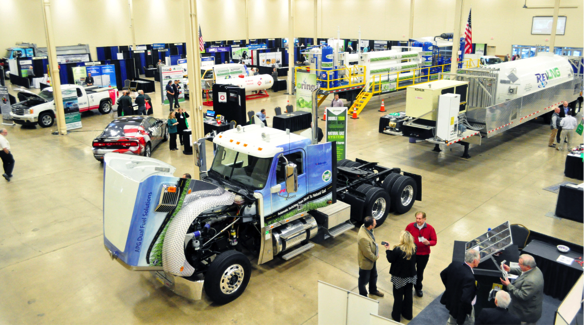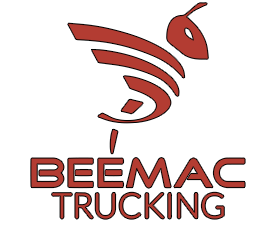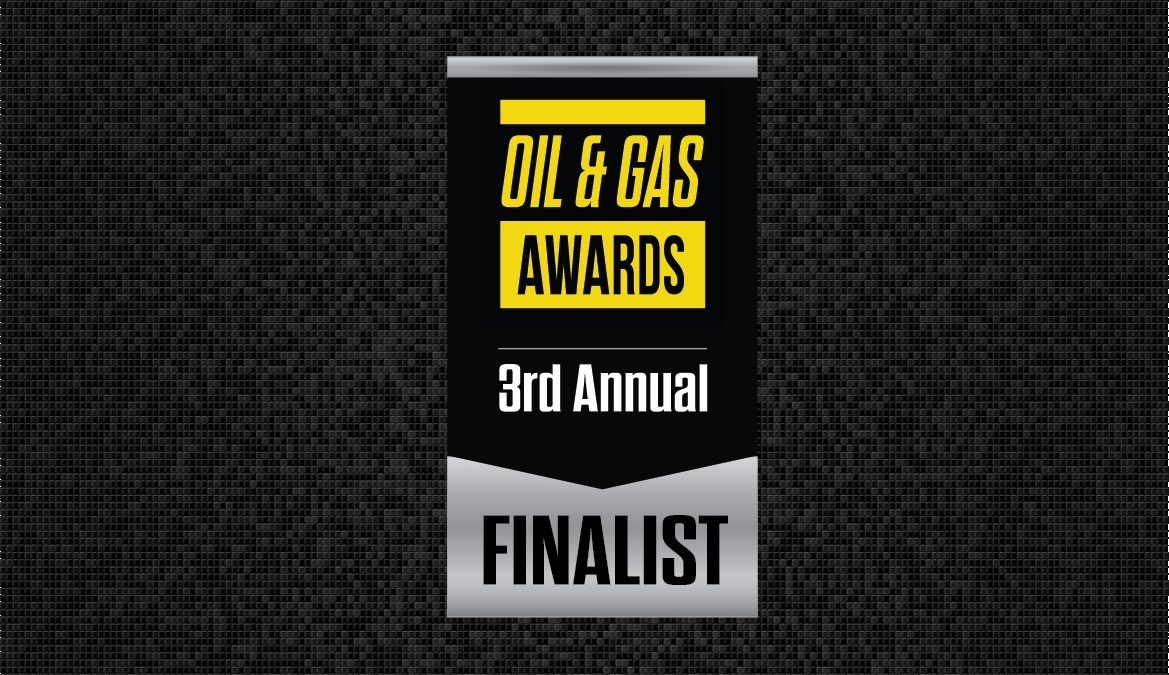
Alternative Fueling Expo & Conference Approaching
February 17, 2015
2015 Energy Leadership Awards Approaching
May 7, 2015By: Kristie Kubovic, Director of Communications, Shale Media Group
Edited By: Mindy Gattner, Editor, Shale Media Group
Photos Provided By: Oil & Gas Awards
The third annual Northeast Oil & Gas Awards were held on Wednesday, March 25, 2015 at the Westin Convention Center in Pittsburgh, PA. The event is comprised of the Industry Summit and Awards Gala. Over 500 attendees enjoyed the Awards Gala, which consisted of the finalists showcase; a networking reception; a welcome, given by Marc Bridgen, Chief Marketing Officer, Oil & Gas Awards; the keynote, presented by Louis D’Amico, President and Executive Director, Pennsylvania Independent Oil & Gas Association (PIOGA); dinner; the awards presentation; and a post awards bar with networking.
“The Oil & Gas Awards recognize the outstanding achievements made within the upstream and midstream sectors of the oil and gas industry. The Awards continue to act as a platform for the oil and gas industry to demonstrate and celebrate the advances made in the key areas of environmental stewardship, health and safety, efficiency, innovation, and corporate social responsibility. The whole program is about celebrating each other’s achievements and showcasing the responsible companies with that “extra edge.” The work they do is clearly present in the northeast shale plays,” relayed Oliver Bridgen, COO, Oil & Gas Awards.
The Oil & Gas Awards are judged by a distinguished panel of senior executives in the industry. “We have 25 categories covering the entire upstream and midstream sectors of the US oil and gas industry. These companies are responsible for the overall growth of the industry. An independent panel of over 100 judges, who review all of the submissions, judges the Awards. They judge each entry based on the criteria of that particular category. A point system produces a short list of typically three finalists per category,” explained Oliver Bridgen.
Here is the full list of 2015 Northeast Oil & Gas Awards finalists:
Access Midstream; ARCADIS-U.S., Inc.; ARM Group Inc.; Astro Thermal Tec Ltd.; Avatar Management Services, Inc.; Baker Hughes; Beemac Trucking; Bilfinger Westcon Inc.; BOND; Calfrac Well Services; Casco USA; CDM Resource Management LLC; Cenergy, LLC; CIANBRO; Cinco Energy Management Group; Civil & Environmental Consultants, Inc. (CEC); Columbia Midstream Group; Crestwood Midstream Partners LP; Davis Law; Dominion Resources; Dresser-Rand; E.S. Wagner Company; Eclipse Resources Corporation; Entech Engineering, Inc.; Environmental Tank & Container; EOG Resources; Evets Oil & Gas Construction Services; EZLifline; Fortis Energy Services; Gulfport Energy Corporation; Halliburton; Hill International Trucks; Hodgson Russ LLP; IPC Energy Services, LLC; JC Fodale Energy Services; Keystone Clearwater Solutions; Keystone Pure Water Tech Inc.; Kibbe Oil & Gas Field Services; Lauttamus Communications; Leo’s All Season Vehicles, Inc.; MAC Safety; McCutcheon Enterprises, Inc.; McTish, Kunkel & Associates; Momentum; Mountaineer Keystone Holdings, LLC; Mustang Oilfield Services, LLC; New Pig Energy; Noise Solutions (USA) Inc.; Orion Drilling; Packers Plus Energy Services Inc.; Pioneer Energy Services; Range Resources; Rice Energy Inc.; Scientific Drilling International; Shale Media Group; Shalewater Solutions; Southwestern Energy Company; Steptoe & Johnson PLLC; TekSolv; The Great Lakes Construction Co.; Total Equipment Company; Total Safety; U.S. Well Services, LLC; Unimin Corporation; Warren Resources, Inc.; and Worthington Industries.
Here are the 2015 Northeast Oil & Gas Awards categories and winners:
Trucking Company of the Year – Presented by Kenworth: Beemac Trucking
Engineering Company of the Year: ARM Group Inc.
Water Management Company of the Year: Keystone Clearwater Solutions
Award for Excellence in Health & Safety – Operational: Bilfinger Westcon, Inc.
Consultancy of the Year: Civil & Environmental Consultants, Inc. (CEC)
Manufacturer of the Year: Worthington Industries
Award for Excellence in Well Completion: Packers Plus Energy Services, Inc.
Construction Company of the Year: BOND
VZ Environmental Award for Excellence in Environmental Stewardship: Range Resources
New Technology Development of the Year – Software: Shalewater Solutions
The Oil & Gas Financial Journal Transaction of the Year: Southwestern Energy Company
Breitling Energy Future Industry Leader: Lauren Parker – Civil & Environmental Consultants, Inc. (CEC)
Award for Excellence in Health & Safety – Products: TekSolv
Industry Supplier of the Year: CASCO USA
Oilfield Services Company of the Year: McCutcheon Enterprises, Inc.
Bilfinger Westcon Midstream Company of the Year: Columbia Midstream Group
New Technology Development of the Year – General/Products: U.S. Well Services, LLC
JC Fodale Award for Excellence in Corporate Social Responsibility: Dominion Resources
Eclipse Resources Award for Drilling Excellence: Baker Hughes
Law Firm of the Year: Steptoe & Johnson, PLLC
General Industry Service Award: IPC Energy Services, LLC
Themark Corporation E&P Company of the Year: Eclipse Resources Corporation
Industry Leader: James E. Kriebel – Kriebel Companies
After winning the Trucking Company of the Year, David Dudo, Senior Vice President of Operations, Beemac Trucking, expressed, “It is a great honor to receive this award, and I am honored to be part of this great team we have at Beemac. We are proud of our employees, our commitment to the community, and especially our efforts at promoting foreign oil independency. By replacing diesel burning engines with cleaner burning compressed natural gas (CNG) powered engines, fueled by our own CNG filling station in Ambridge, PA, we are reducing pollutants and providing cleaner air for the community.”
The Industry Summit preceded the Awards Gala. The conference contained keynote presentations and panel discussions from leading industry executives. Oliver Bridgen relayed, “Content throughout the day focused around environmental stewardship, health and safely, regulations, and corporate social responsibility. There were a number of panels and keynote presentations throughout the day covering these key topics, specifically relating to the region.”
The morning’s Unconstitutional Regulation of the Oil & Gas Industry – Lawmaking through Litigation Panel Discussion explored federal overreach; the change of definition for waters; the Clean Air Act; EPA, US Fish & Wildlife capitulation to lawsuits by environmental organizations; and intersection between federal and state regulators. Much of the conversation centered on “sue and settle,” which occurs when an agency, like the Environmental Protection Agency (EPA), intentionally relinquishes its statutory discretion by accepting lawsuits from outside groups that effectively dictate the priorities and duties of the agency through legally binding, court-approved settlements negotiated behind closed doors – without participation by other affected parties, like the shale oil and gas industry or the public.
Lawmaking through Litigation Panelist, Daniel Spitzer, Partner, Energy Environment Group, Hodgson Russ LLP, explained, “We looked at the whole issue of “mission creep,” where the EPA, particularly under the Obama administration, is taking on almost unconstitutional powers in regulating the oil and gas industry and targeting the oil and gas industry to forward the President’s plan as it relates to climate change in a way not authorized by the underlying legislation. This is frankly having an enormous cost on the environment. … Some of the rules that are currently being proposed have enormous costs in terms of job losses. The public is not really aware of having these rules put into effect until we see the job losses.”
In addition, Lawmaking through Litigation Panelist, Matthew Morrison, a partner at Pillsbury Winthrop Shaw Pittman and former EPA official, added, “A big part of the discussion was on EPA work and the sue and settle dynamic that people are very concerned about, in particular with the most recent administration. The budget cuts have the potential to only exacerbate those concerns. When the EPA has a more fulsome budget it has the ability to set its own regulatory agenda and pursue the rules on the schedule that it prefers based on its own priorities. When EPA’s budget gets cut, there are more missed deadlines, which enables outside groups to step in and selectively pick the rules that matter most to them. In other words, cuts to EPA’s budget allow outside groups to take hold of part of the Agency’s regulatory agenda through litigation – a situation that the Agency does not relish, contrary to the allegations of conspiracy and collusion between EPA and environmental groups. These lawsuits on missed deadlines are like legal “lay-ups” – they are very hard to defend because the deadlines are missed more than they are met. That’s because the resources given to EPA are far short of what the Agency needs to comply with the schedules that Congress established under various federal environmental laws. The lawsuits then result in court orders that the agency has to comply with, but they’re not necessarily in a sequence, time, and priority that the agency would otherwise want to pursue if it had its own fully funded group of people to write those regulations.”
Lawmaking through Litigation Panelist, Mike Krancer, Philadelphia-based Chairman of the Energy Team at the law firm Blank Rome, and former Secretary of the Pennsylvania Department of Environmental Protection (DEP), expressed, “It’s become a judgeocracy, and I don’t see much difference between the environmentalists and the EPA. A huge piece of the US economy is being driven by environmentalists and a lot of people wearing black robes. Those judges aren’t doing the right thing – they are to interpret the law – not make the law.”
Discussing the importance of the panel discussion, Northeast Oil & Gas Awards attendee, Stephanie Skeen, Attorney, Davis Law, a Northeast Oil & Gas Awards finalist, relayed, “I believe it is important as an industry to be transparent with the general public about every aspect of this industry and hold ourselves accountable to the public that is affected everyday by our presence in their communities. In order to do this, I believe we have to continually educate ourselves so that we can provide the public with accurate and reliable information. For our office, staying current and up-to-date on new and pending legislation, court decisions, and legal trends is paramount. Attending panel discussions such as Lawmaking through Litigation, among other things, ensures that we stay informed about the current and future climate of this industry.”
The Minimizing Environmental Impact Through Innovative Water Management, Well Site Construction, and Logistics Panel Discussion looked at recycling flowback and produced water trends; using pipelines/innovative ways to deliver water; new EPA air standards, strategies for compliance, how do we minimize VOC’s and NO emissions; minimizing erosion when constructing a well pad or laying pipeline; and reducing the number of truck trips to/from well pad.
“The panel discussion focused primarily on minimizing our footprint as an industry, minimizing our footprint on the environment, and ensuring that we have regulatory compliance going over and above what is required to make sure that the environment, surrounding area, and the citizens of the area are safe,” explained Minimizing Environmental ImpactPanelist, Melissa Hamsher, Vice President of Environment Regulatory, Safety, and Construction, Eclipse Resources, who added, “There is a lot of accountability with water withdraws, water usage, and water transports. Also with a recycling program, we can minimize the amount of fresh water that we use in our day-to-day operations.”
Additionally, Minimizing Environmental Impact Panelist, Lauren Parker, Principal and Civil Engineer, Civil & Environmental Consultants, Inc. (CEC), commented, “One of the main focuses is the planning needed to reduce the impact on the environment, such as identifying wetlands and threatened and endangered species. Also, figuring out what’s best for the landowner and the environment through trying to reduce the footprint to get to the end goal of actually being able to drill a well.”
Discussing the importance of the panel and topic, Northeast Oil & Gas Awards attendee, Greg Cook, CEO, Mustang Oilfield Services LLC, a Northeast Oil & Gas Awards finalist, relayed, “Mustang Oilfield Services concentrates on different areas to minimize environmental impact. This past year, Mustang has primarily focused on the reuse of water in the industry. Mustang has taken steps to engineer our own water filtration system to aid in the reuse on the well pad. We understand the value in reusing water to help decrease the use of fresh water sources. Not only does it cut down on fresh water sources, but it also lessens the amount of trucks on the road.”
During the Why Should Everyone Care about Infrastructure Delays Keynote Address, Candyce Fly Lee, Williams Engineering & Construction Director of Projects, noted that pipelines are the safest form of transportation for natural gas liquids. She also pointed out that pipeline constraints in the Northeast have resulted in increased gas prices, with residents and businesses paying prices up to six times more than those living in regions with adequate natural gas infrastructure. Lee described Williams’ ability to meet the nation’s need for pipeline infrastructure and urged, “There is no better time than to be right where we are, right now. We have the right people in the right place with the right strategy.”
Including both points of view from both safety professionals and the operator standpoint, the Health and Safety Panel Discussion focused on movement to require safety certification for all workers; the latest standards from OSHA; training local first responders; best practice for reducing accidents; learning from incidents; and the role of risk management in health and safety.
For the operator side, Health and Safety Panelist, Frank Harrison, President, Areion Energy, noted his whole career has been in energy and pointed out, “I’ve seen safety programs evolve positively in the past several 10 to 15 years—a lot of positive aspects have come from that.” Harrison added, “Our focus today centered on trading ideas regarding what different entities are doing to enhance the health and safety programs that we carry out. There was good discussion on some of the things that are ongoing to try to safeguard the lives of the folks who work with us and support us—those who make a lot of things happen for us in the field and elsewhere.”
Also, Health and Safety Panelist, Charlie Dixon, Safety and Workforce Director, Ohio Oil and Gas Energy Education Program and Foundations (OOGEEP), talked about training firefighters as well as industry workers. Regarding firefighters, Dixon says, “More often than not, it is about training for non-emergency situations. We want them to understand what is going on at the well pad in the oil and gas industry.” Dixon relayed that the industry has accepted that responsibility of training first responders. “In Ohio, we have trained over 1,200 firefighters in a two-day course. Through classroom opportunities and hands on experience, such as live burns with crude oil and natural gas, we’ve helped firefighters understand the oil and gas industry better.” The panel also explored what kind of programs are in place and if more certified trainings should be put in place. Dixon relayed, “Our industry has great safety staff. Plus I think what we discovered is that we have a lot of good programs already in place, such as SafeLand.”
SafeLandUSA (SLUSA) Orientation Training was developed as a widely accepted, standardized safety and environmental orientation to set high minimum requirements with the primary goal of reducing the number of preventable incidents in the shale oil and gas industry to zero accidents. Northeast Oil & Gas Awards attendee and certified SafeLand Instructor, Chris Miranda, who is also the President and Founder of MAC Safety, Inc., a Northeast Oil & Gas Awards finalist, explained, “SafeLand is required for access to most local shale oil and gas sites and is a pre-requisite to establish at least baseline safety knowledge. SafeLand training is an all-day safety course covering the basics in safety knowledge and shows a commitment from the company to invest in employee safety.”
Overall the Northeast Industry Summit granted attendees the opportunity to learn and hear from leading industry experts in the region, while the Awards Gala provided an outlet to network and celebrate the industry’s achievements. In addition to the Northeast Awards, the Oil & Gas Awards also host the Gulf Coast, Midcontinent, Rocky Mountain, Southwest, and West Coast Oil & Gas Awards in the US to cover the six main shale oil and gas regions in the US. For more information, visit www.oilandgasawards.com.
To view interviews from the 2015 Northeast Oil & Gas Awards, click below for:
Oliver Bridgen of Oil & Gas Awards, click here
Frank Harrison of Areion Energy, click here
Charlie Dixon of Ohio Oil and Gas Energy Education Program and Foundations (OOGEEP), click here
Chad McCutcheon of McCutcheon Enterprises, click here
Matthew Morrison of Pillsbury Winthrop Shaw Pittman LLP, click here
Lauren Parker of Civil & Environmental Consultants, Inc. (CEC), click here
Melissa Hamsher of Eclipse Resources, click here
Daniel Spitzer, Partner, Energy Environment Group, Hodgson Russ LLP, click here
Shale Media Group (SMG) is the news, information, and education resource dedicated to the shale oil and gas industries by messaging across video, Internet, publications, events, and radio. For more, check out ShaleMediaGroup.com to access all platforms, including SMG’s latest news delivery system–Shale Energy Business Briefing (SEBB), an ad-free subscription based service, where subscribers receive a real-time, daily email, featuring concise, hard hitting shale news 7 days/week, 365 days/year. To sign up, go to sebb.us. Kristie Kubovic is the Director of Communications at Shale Media Group. Contact her at Kristie@ShaleMediaGroup.com.


